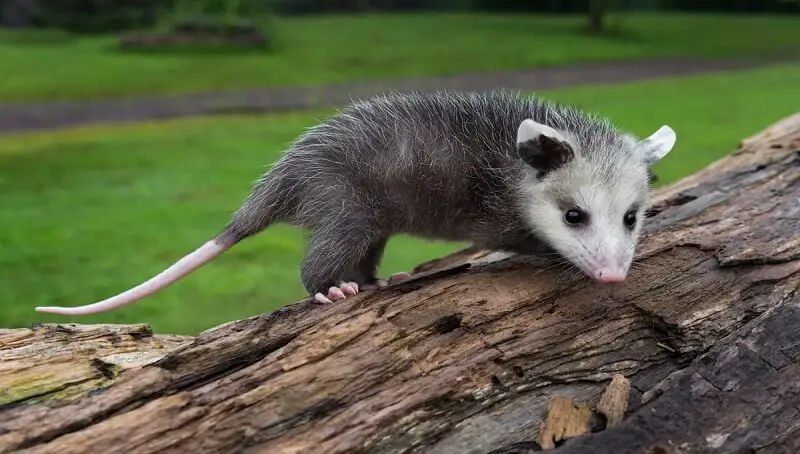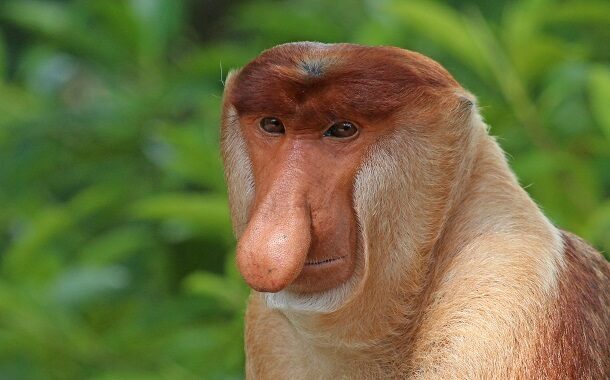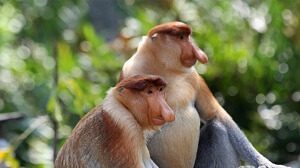
How Big Will a Teacup Poodle Get?
September 30, 2022
Interesting Facts About the Virginia Opossum
October 2, 2022
Origin
The Proboscis Monkey, with the scientific name Nasalis larvatus, is part of the family Cercopithecidae, the order Primates. It lives on the island of Borneo and in Southeast Asia in the swampy mangrove areas of tropical forests. It can be found in Malaysia on the banks of the Kinabatangan River.
It is one of the oldest species of monkeys, and it is also called the long-nosed monkey.
It can be found in foreign and specialized literature under the names: The proboscis monkey, long-nosed monkey, Bekantan monkey in Malaysia, Monyet Belanda, in “Dutch monkey”, or Belarusian orang, in “Dutchman”.
Due to hunting and habitat loss through deforestation and other human actions, the number of proboscis monkeys is constantly decreasing. Currently, it is estimated to be around 3000 specimens. Their number has fallen over 50% in recent years.
Subspecies:
- Nasalis larvatus larvatus
- Nasalis larvatus orientalis
Appearance
The long-nosed monkey is 66 to 77cm long in males and 54 to 64 in females when it comes to head-body length. A female weighs from 7 to 12 kg, while a male weighs from 16 to 22. The body is covered with a reddish-brown coat on the head, shoulders, and back. The tail and limbs are gray.
The coat around the neck is light yellow-brown. The palms are dark gray with an opposable thumb, as in humans. The limbs are quite thin in relation to the body and longer. The tail has the ability to grab and catch, and it can use it as the fifth hand.
Also, check out my articles on:
Specific to the proboscis monkey is the nose of the male that stands out. This is where the monkey with the trunk or the long-nosed bad monkey names come from. This feature is designed to attract the female during mating.
The female’s nose is much smaller than that of the male but larger than other species of monkeys. This makes the animal’s muzzle not stand out as it is not prominent.
Reproductive dimorphism is obvious, with the male having a larger and longer body (not only the nose) than the female. The male can reach twice the weight of a female.
Food
When it comes to food, the long-nosed monkey has a large, roomy stomach that dilates if it fills up. When a monkey has a full belly, it can easily be confused with a female during gestation. In the stomach, the leaves are attacked by numerous bacteria that cause fermentation and digestion. This process provides the monkey with energy.
The proboscis monkey has to avoid easily digestible foods because it has rapid digestion and can become bloated due to gas accumulating in the stomach. Monkeys who exaggerate with the consumption of foods that produce gas in the stomach can get really ill, sometimes losing their lives in the process. Therefore, they should not consume ripe fruits that are fleshy and soft, and high in sugar, but the driest and most bitter ones instead, for slower digestion. It has been observed that this animal consumes at least 55 species of plants.
Food is mostly made of leaves and fruits. It is a gourmand monkey that can travel up to 2 km daily in search of food. Researchers believe that the long-nosed monkey is dependent on those places because of the high levels of salts and minerals it finds in the food.
Other species of monkeys and humans cannot consume some leaves that this monkey eats. The long-nosed monkey can consume them as it has bacteria that neutralize poisons in food.
Some plants that this animal ingests contain antibiotic elements, so when it consumes them, they will remove the bacteria from its stomach.
When drinking water, they prefer to lean on the branches until they reach the water with their mouth, rather than go down to the ground.
Behavior
 The proboscis monkey is a unique animal. It is distinguished both by the highly developed nose of the male and by its swimming performance. Although it swims very well, it prefers not to go down from trees to the ground. If a female with a baby on her belly jumps into the water, in a few seconds, the baby moves from the belly to the back of the mother to get some air.
The proboscis monkey is a unique animal. It is distinguished both by the highly developed nose of the male and by its swimming performance. Although it swims very well, it prefers not to go down from trees to the ground. If a female with a baby on her belly jumps into the water, in a few seconds, the baby moves from the belly to the back of the mother to get some air.
They are arboreal animals and spend most of their time in trees. Even though some monkeys move slower than others, because of their bellies, they are excellent climbers.
Like other species of monkey, such as the Hussar monkey, it lives in groups of 5-10 specimens made of females with offspring who have a dominant male. The proboscis male is very aggressive to those who disturb their silence, threatening them by showing their bare teeth and making loud sounds like grunts. At night they gather on the banks of the rivers, and the males often change their female groups.
A wide range of sounds is used for communication. They growl, scream and make different sounds with their nose. During the noise, the biggest monkey makes a background sound that calms the group.
Reproduction
After the mating period, the 6-7-month gestation will follow, after which the female gives birth to a single cub. It eats its placenta and cleans the offspring’s fur. The baby is breastfed for 6 months and then switched to solid food. As soon as it gets the taste of solid food, it begins to look for its own food, being very independent.
At birth, the young have a blue face, the fur is darker, sometimes black, and the nose is small. With age, the color of the fur changes to that of adults, and the nose begins to grow according to gender, in males more than in females.
Males who reach the age of 1-2 leave the group.
Facts
- The proboscis monkey is a very good swimmer.
- When threatened, proboscis monkeys can swim up to 20 feet underwater.
- It can consume plants that humans or other species of monkeys cannot consume.
- They have large stomachs due to rapid digestion and consumption of some foods that cause gas.
- A common activity is jumping between trees and the splashing of their bellies in water.
- Both genders are born with a normal monkey nose, black fur, and blue faces. With age, the nose grows, and the color changes.
- Males use their large noses to attract females.
- The nose of an adult male is often so long that it has to be moved aside by the monkey to be able to eat.
